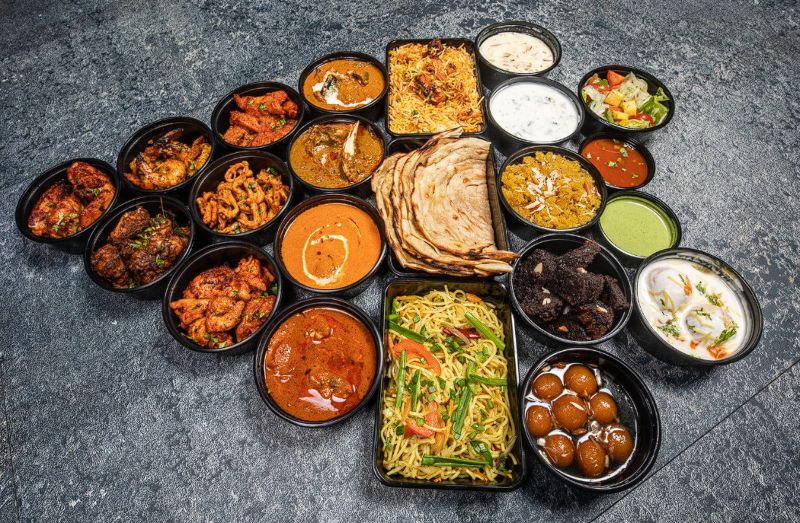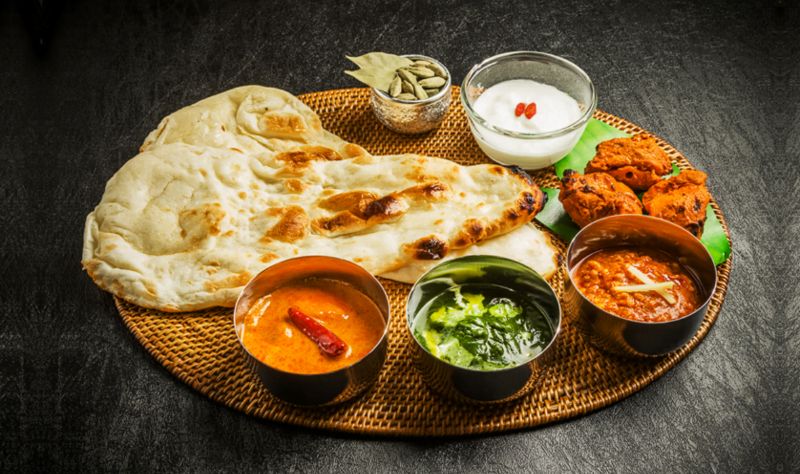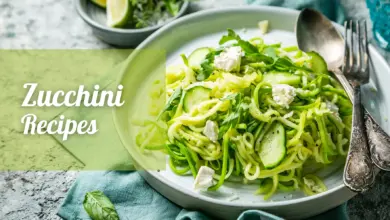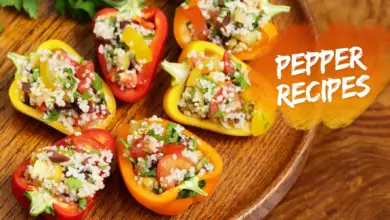The delicious Indian Food Menu
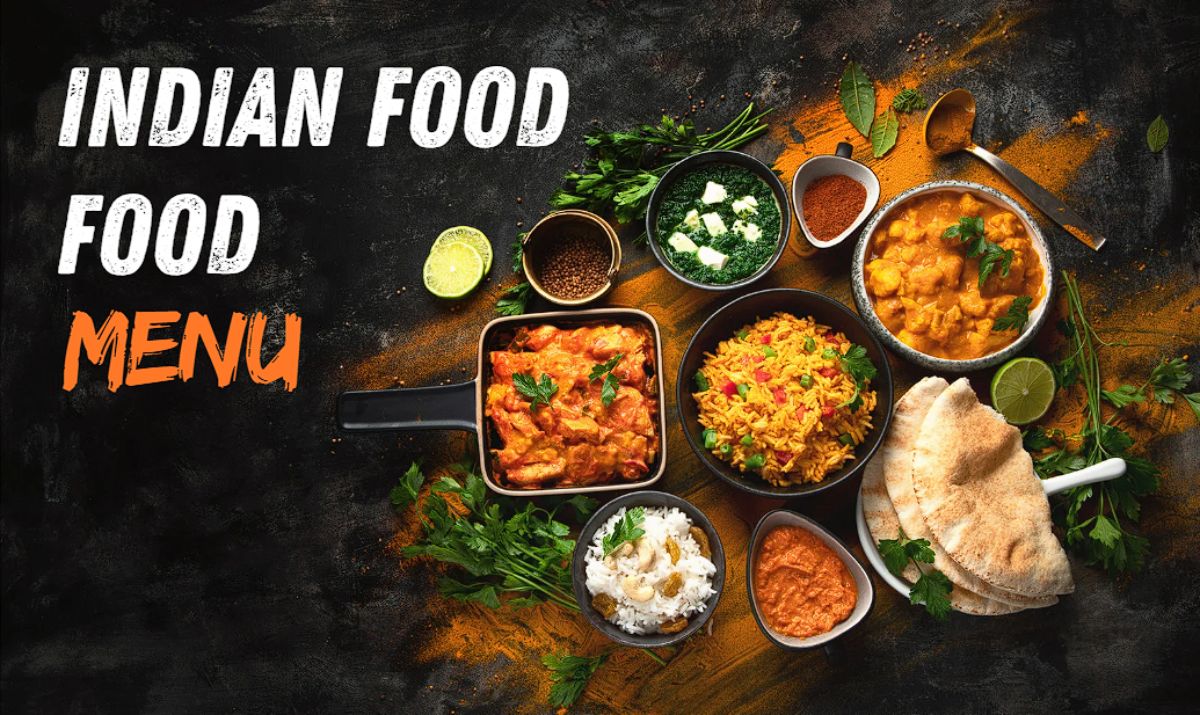
Introduction
Indian Food Menu: Indian cuisine is renowned worldwide for its vibrant flavors, intricate spice combinations, and diverse culinary traditions. This rich gastronomic heritage reflects India’s vast cultural diversity, with each region offering its own unique dishes and cooking styles. Indian food not only tantalizes the taste buds but also tells the story of its people’s history, culture, and traditions. Whether you are a food enthusiast or a curious cook, diving into the world of Indian cuisine promises an unforgettable culinary adventure.
Table of Contents
Appetizers
Samosas
Ingredients
Samosas are a quintessential Indian appetizer, loved for their crispy exterior and flavorful filling. The dough for the pastry is typically made from all-purpose flour, water, and a pinch of salt, creating a light yet sturdy shell. The filling, often a mix of mashed potatoes, peas, and a blend of spices like cumin, coriander, and garam masala, can also include minced meat for a non-vegetarian version. The combination of these ingredients provides a burst of flavors in every bite, making samosas a popular choice at gatherings and festivals. [Indian Food Menu]
Preparation Method
The preparation of samosas is an art in itself. The dough is kneaded until smooth and then set aside to rest. Meanwhile, the filling is prepared by cooking the potatoes, peas, and spices together until well-blended. The dough is then divided into small balls, rolled out into thin circles, and cut into halves. Each half is shaped into a cone, filled with the potato mixture, and sealed to form a triangular pocket. These pockets are deep-fried in hot oil until golden brown and crispy. The result is a savory pastry that is crunchy on the outside and soft and flavorful on the inside. [Indian Food Menu]
Pakoras
Types of Pakoras
Pakoras are another popular Indian snack, enjoyed for their crunchy texture and versatility. These deep-fried fritters can be made from a variety of ingredients, including vegetables like onions, spinach, and potatoes, or even chicken. Each type of pakora offers a different taste and texture experience. Onion pakoras, for instance, are thinly sliced onions coated in a spiced chickpea flour batter and fried until crispy. Spinach pakoras feature whole spinach leaves dipped in batter and fried, providing a unique combination of crunchy and leafy textures. [Indian Food Menu]
Cooking Techniques
The key to perfect pakoras lies in the batter, which should be thick enough to coat the ingredients evenly but not too thick to become heavy. The batter typically consists of chickpea flour, water, and spices such as turmeric, chili powder, and cumin. Once the vegetables or meat are dipped in the batter, they are deep-fried in hot oil until golden and crispy. It’s important to maintain the right oil temperature to ensure the pakoras are cooked evenly and absorb minimal oil. Pakoras are best enjoyed hot, often served with a side of mint or tamarind chutney for a burst of additional flavor. [Indian Food Menu]
Chutneys
Common Ingredients
Chutneys are essential accompaniments in Indian cuisine, adding a burst of flavor and freshness to various dishes. These condiments are typically made with a base of fruits, vegetables, or herbs, combined with spices to create a unique taste profile. Common ingredients include mint, cilantro, mango, tamarind, and coconut. Mint and cilantro chutneys are popular for their fresh, herbaceous flavors, while mango and tamarind chutneys offer a sweet and tangy contrast. Coconut chutney, often served with South Indian dishes, provides a creamy and mildly spiced complement. [Indian Food Menu]
Popular Varieties
There are countless varieties of chutneys in Indian cuisine, each offering its own distinctive flavor. Mint chutney, made with fresh mint leaves, cilantro, green chilies, and lemon juice, is a refreshing accompaniment to snacks and grilled dishes. Tamarind chutney, on the other hand, is sweet and tangy, made by simmering tamarind pulp with jaggery (a type of unrefined sugar) and spices. Mango chutney combines ripe mangoes with spices and vinegar to create a sweet and spicy relish. These chutneys not only enhance the taste of the main dishes but also add a layer of complexity to the overall meal. [Indian Food Menu]
Main Courses
Vegetarian Dishes
Paneer Butter Masala
Paneer Butter Masala is a beloved vegetarian dish that features paneer, or Indian cottage cheese, cooked in a rich and creamy tomato-based gravy. The sauce is made with ripe tomatoes, butter, cream, and a blend of spices like cumin, coriander, and garam masala. This dish is known for its luscious texture and mildly spiced flavor, making it a favorite among both vegetarians and non-vegetarians. Paneer Butter Masala is often enjoyed with naan or rice, allowing diners to soak up the delicious gravy.
The preparation of Paneer Butter Masala begins with frying cubes of paneer until they are golden brown. The tomato gravy is then prepared by sautéing onions, garlic, and ginger, adding pureed tomatoes, and cooking until the oil separates. Cream and butter are added to the gravy, followed by the fried paneer cubes. The dish is simmered until the paneer absorbs the flavors of the sauce, resulting in a delectable and comforting meal. Garnished with fresh cilantro and a drizzle of cream, Paneer Butter Masala is a true delight for the senses. [Indian Food Menu]
Chole Bhature
Chole Bhature is a traditional North Indian dish featuring spicy chickpeas (chole) paired with deep-fried bread (bhature). The chickpeas are cooked in a tomato-based gravy with a medley of spices, including cumin, coriander, and garam masala, resulting in a robust and flavorful curry. Bhature, on the other hand, is a soft and fluffy bread made from all-purpose flour and yogurt, deep-fried until golden and puffed. This dish is a popular choice for breakfast or brunch, particularly in the northern regions of India.
The preparation of Chole Bhature involves soaking chickpeas overnight and then cooking them with onions, tomatoes, and spices until tender and aromatic. The bhature dough is kneaded until smooth and then left to rest, allowing it to rise slightly. The dough is divided into small balls, rolled out into circles, and deep-fried until puffed and golden. The combination of spicy chole and crispy bhature creates a satisfying and hearty meal that is often enjoyed with pickles and yogurt on the side. [Indian Food Menu]
Non-Vegetarian Dishes
Chicken Tikka Masala
Chicken Tikka Masala is a globally renowned dish that showcases marinated chicken pieces cooked in a creamy and spiced tomato sauce. The chicken is marinated in a mixture of yogurt, lemon juice, and spices such as cumin, coriander, and garam masala, then grilled or baked until charred and smoky. The sauce is made with tomatoes, cream, and a blend of spices, resulting in a rich and flavorful gravy that perfectly complements the tender chicken pieces.
To prepare Chicken Tikka Masala, the marinated chicken is first cooked until it develops a smoky flavor and charred edges. The sauce is then made by sautéing onions, garlic, and ginger, adding pureed tomatoes, and cooking until thickened. Cream is added to create a luscious texture, and the grilled chicken pieces are simmered in the sauce until they absorb the flavors. This dish is often served with naan or rice, making it a hearty and satisfying meal. The combination of smoky chicken and creamy tomato sauce creates a delightful balance of flavors and textures. [Indian Food Menu]
Rogan Josh
Rogan Josh is a traditional Kashmiri dish known for its vibrant red color and aromatic flavors. This lamb curry is made with tender pieces of lamb cooked in a yogurt-based gravy with a blend of spices, including fennel, ginger, and Kashmiri red chilies. The name “Rogan Josh” translates to “red lamb,” referring to the dish’s signature color and the main ingredient. This dish is a staple in Kashmiri cuisine and is often served with rice or naan.
The preparation of Rogan Josh begins with marinating the lamb pieces in yogurt and spices to tenderize the meat and infuse it with flavor. The lamb is then cooked with onions, garlic, and ginger, along with a blend of spices, until tender and aromatic. The addition of Kashmiri red chilies gives the dish its distinctive red color and a mild heat. The gravy is simmered until thickened, allowing the lamb to absorb the rich flavors. Rogan Josh is a fragrant and flavorful dish that showcases the depth and complexity of Kashmiri cuisine. [Indian Food Menu]
Biryani
Types of Biryani
Biryani is a fragrant rice dish that is layered with meat, vegetables, and a blend of aromatic spices. This dish has many regional variations, each with its unique preparation style and ingredients. Hyderabadi Biryani, for example, is known for its spicy flavor and the use of basmati rice, marinated meat, and saffron. Lucknowi Biryani, on the other hand, features a milder flavor and is cooked in the dum style, where the ingredients are slow-cooked in a sealed pot. Kolkata Biryani includes potatoes and boiled eggs, adding a unique twist to the traditional recipe.
Each type of biryani offers a different taste experience, reflecting the culinary traditions of its region. Despite the variations, all biryanis share common elements: fragrant basmati rice, a blend of spices, and a combination of meat or vegetables. The layering of rice and meat, along with the slow-cooking process, allows the flavors to meld together, creating a rich and aromatic dish. Biryani is often garnished with fried onions, fresh herbs, and boiled eggs, adding to its visual appeal and flavor complexity. [Indian Food Menu]
Cooking Process
The process of making biryani involves several steps, each crucial to achieving the perfect dish. The rice is first parboiled with whole spices like bay leaves, cloves, and cardamom to infuse it with flavor. Meanwhile, the meat or vegetables are marinated with yogurt and spices, then cooked until tender. In a large pot, layers of rice and meat are alternated, with each layer sprinkled with saffron-infused milk, fried onions, and fresh herbs. The pot is then sealed with dough and cooked on low heat, allowing the flavors to meld together and the rice to absorb the aromas.
The result is a dish that is rich in flavor and aroma, with each grain of rice infused with the spices and juices from the meat. Biryani is typically served with raita (a yogurt-based side dish) and salan (a spicy gravy) to complement its rich flavors. The intricate preparation and the use of high-quality ingredients make biryani a special dish, often reserved for celebrations and festive occasions. [Indian Food Menu]
Breads
Naan
Varieties of Naan
Naan is a popular Indian flatbread known for its soft and fluffy texture. This bread is traditionally cooked in a tandoor (clay oven), giving it a slightly charred and smoky flavor. There are several varieties of naan, each offering a different taste experience. Plain naan is made with a simple dough of flour, water, and yeast, while garlic naan is flavored with minced garlic and brushed with butter. Stuffed naan varieties, such as keema naan (filled with spiced minced meat) and paneer naan (filled with spiced cottage cheese), add an extra layer of flavor and texture.
Each type of naan has its unique appeal, making it a versatile accompaniment to various Indian dishes. The soft and fluffy texture of naan makes it perfect for scooping up rich and creamy curries, while the added flavors of garlic or stuffed fillings enhance the overall dining experience. Whether enjoyed plain or with additional toppings, naan is a staple in Indian cuisine that complements a wide range of dishes. [Indian Food Menu]
Baking Techniques
The key to making perfect naan lies in the dough and the baking process. The dough is kneaded until smooth and elastic, then left to rise until doubled in size. It is then divided into small balls, rolled out into circles, and placed in a preheated tandoor or oven. The high heat of the tandoor cooks the naan quickly, creating a soft and fluffy texture with a slightly charred exterior. For those without a tandoor, naan can also be cooked on a hot skillet or griddle, with a similar result. Brushing the naan with butter or ghee after baking adds a rich and indulgent flavor.
The versatility of naan makes it a popular choice in Indian cuisine, whether as a side dish or a main course. It can be served with a variety of dips and spreads, such as hummus or baba ghanoush, or used to make sandwiches and wraps. The possibilities are endless, making naan a beloved and indispensable part of Indian dining. [Indian Food Menu]
Roti
Ingredients
Roti is a staple Indian flatbread made from whole wheat flour, water, and a pinch of salt. This simple and nutritious bread is a common accompaniment to Indian meals, providing a healthy and wholesome option for scooping up curries and stews. The dough for roti is made by mixing the flour and water until a smooth and pliable dough is formed, then left to rest before being rolled out into thin circles. The simplicity of the ingredients allows the natural flavor of the wheat to shine through, making roti a versatile and delicious bread. [Indian Food Menu]
Cooking Techniques
The process of making roti involves rolling out the dough into thin circles and cooking them on a hot griddle or skillet until they puff up and develop golden brown spots. The key to perfect roti is the even rolling and cooking, ensuring that the bread is thin and evenly cooked. The griddle should be preheated to the right temperature to allow the roti to cook quickly and evenly, creating a soft and pliable texture. Roti is often brushed with ghee or butter after cooking, adding a rich and indulgent flavor.
Roti is a versatile bread that can be enjoyed with a variety of dishes, from simple dal (lentil stew) to rich and creamy curries. Its mild flavor and soft texture make it a perfect vehicle for soaking up the flavors of the main dish, enhancing the overall dining experience. Roti can also be used to make wraps and sandwiches, providing a healthy and nutritious alternative to traditional bread. [Indian Food Menu]
Desserts
Gulab Jamun
Preparation Steps
Gulab Jamun is a beloved Indian dessert made from deep-fried dough balls soaked in a sweet syrup. The dough is typically made from khoya (reduced milk) or milk powder, combined with flour and a pinch of baking powder to create a soft and pliable dough. The dough is then formed into small balls and deep-fried until they turn golden brown. The fried balls are soaked in a sugar syrup flavored with cardamom, rose water, and saffron, allowing them to absorb the sweet and aromatic syrup.
The result is a melt-in-your-mouth dessert that is rich and indulgent, with a delicate flavor that is both sweet and fragrant. Gulab Jamun is often enjoyed at celebrations and festivals, symbolizing joy and sweetness. The preparation of this dessert requires careful attention to detail, ensuring that the dough balls are fried to perfection and soaked long enough to absorb the syrup. The result is a dessert that is both satisfying and delightful, perfect for ending a meal on a sweet note. [Indian Food Menu]
Serving Suggestions
Gulab Jamun is best served warm, allowing the syrup to remain liquid and the dough balls to stay soft and tender. It is often garnished with chopped nuts, such as almonds or pistachios, adding a crunchy contrast to the soft texture of the dough balls. This dessert can also be served with a side of vanilla ice cream or a drizzle of cream, enhancing its rich and indulgent flavor. Whether enjoyed on its own or with additional accompaniments, Gulab Jamun is a dessert that is sure to please. [Indian Food Menu]
Jalebi
Making Process
Jalebi is a popular Indian sweet known for its crispy and juicy texture. This dessert is made by deep-frying a fermented batter in circular shapes and then soaking it in saffron-flavored sugar syrup. The batter is typically made from all-purpose flour, yogurt, and a pinch of baking powder, creating a light and airy consistency. The batter is poured into a piping bag and piped into hot oil in circular shapes, frying until golden and crispy. The fried jalebis are then soaked in a warm sugar syrup flavored with saffron and cardamom, allowing them to absorb the syrup and become juicy.
The preparation of jalebi requires skill and precision, ensuring that the batter is the right consistency and the oil is at the right temperature. The result is a dessert that is crispy on the outside and juicy on the inside, with a sweet and aromatic flavor. Jalebi is often enjoyed at festivals and celebrations, symbolizing joy and sweetness. The vibrant orange color and intricate shapes of jalebi make it a visually appealing dessert that is as delightful to look at as it is to eat. [Indian Food Menu]
Serving Suggestions
Jalebi is best enjoyed fresh and warm, allowing the syrup to remain liquid and the texture to stay crispy. It is often served with a side of rabri (thickened sweetened milk), creating a delightful contrast of flavors and textures. Jalebi can also be garnished with a sprinkle of chopped nuts or a drizzle of honey, enhancing its rich and indulgent flavor. This dessert is a popular choice for breakfast or as a sweet treat at any time of the day, providing a burst of sweetness and joy. [Indian Food Menu]
Kheer
Types of Kheer
Kheer is a creamy rice pudding made with milk, sugar, and rice, flavored with cardamom, saffron, and nuts. This dessert has many regional variations, each offering a unique twist on the traditional recipe. Semiya kheer, for example, is made with vermicelli instead of rice, creating a lighter and more delicate texture. Sabudana kheer is made with tapioca pearls, providing a chewy and satisfying consistency. Each type of kheer offers a different taste experience, reflecting the diverse culinary traditions of India.
Despite the variations, all types of kheer share common elements: creamy milk, sweetened with sugar, and flavored with aromatic spices. The slow cooking process allows the flavors to blend harmoniously, resulting in a rich and indulgent dessert. Kheer is often garnished with chopped nuts, such as almonds and pistachios, adding a crunchy contrast to the creamy texture. This dessert is a popular choice for festive occasions and celebrations, symbolizing joy and prosperity. [Indian Food Menu]
Cooking Tips
The key to making perfect kheer lies in the slow cooking process and continuous stirring. The rice or vermicelli should be cooked until tender and then simmered with milk and sugar until the mixture thickens. It’s important to stir the kheer continuously to prevent it from sticking to the bottom of the pot and to achieve a smooth and creamy consistency. The addition of cardamom and saffron provides a fragrant and aromatic flavor, enhancing the overall taste of the dessert. Kheer can be served warm or chilled, making it a versatile dessert that can be enjoyed at any time of the year.
Kheer is a comforting and indulgent dessert that is sure to please. Whether enjoyed on its own or with additional accompaniments, such as fruit or nuts, kheer provides a satisfying and delightful end to any meal. Its creamy texture and rich flavor make it a favorite choice for dessert lovers, providing a taste of India’s rich culinary heritage. [Indian Food Menu]
Conclusion
Indian cuisine is a vibrant tapestry of flavors, textures, and aromas, offering a rich and diverse culinary experience. From the spicy and savory appetizers to the hearty and satisfying main courses, and the sweet and indulgent desserts, each dish tells a story of India’s cultural heritage and traditions. Whether you are exploring the world of Indian cuisine for the first time or are a seasoned enthusiast, there is always something new and exciting to discover. So, dive into the delicious world of Indian food and embark on a culinary adventure that promises to tantalize your taste buds and leave you craving for more. [Indian Food Menu]
FAQs
Q1. What makes Indian cuisine unique?
Indian cuisine is unique for its diverse use of spices, regional variations, and the blend of different flavors and textures in each dish. The use of spices like cumin, coriander, turmeric, and garam masala adds depth and complexity to the flavors, making each dish distinct and flavorful.
Q2. Are there any healthy options in Indian cuisine?
Yes, Indian cuisine offers many healthy options, including dishes made with fresh vegetables, legumes, and whole grains. Roti, for example, is a nutritious whole wheat flatbread, and dishes like dal (lentil stew) and sabzi (vegetable curry) provide a healthy and balanced meal.
Q3. Can Indian food be made less spicy?
Absolutely! The level of spiciness in Indian food can be adjusted to suit individual preferences. Many dishes can be made mild by reducing the amount of chili and spices used, while still retaining their delicious flavors.
Q4. What are some popular vegetarian Indian dishes?
Some popular vegetarian Indian dishes include Paneer Butter Masala, Chole Bhature, Aloo Gobi (potato and cauliflower curry), and Palak Paneer (spinach and paneer curry). These dishes are flavorful and satisfying, offering a wide variety of options for vegetarians.
Q5. How can I make Indian food at home?
Making Indian food at home is easier than it seems. Start with simple recipes and gradually explore more complex dishes as you become familiar with the ingredients and cooking techniques. Essential spices like cumin, coriander, turmeric, and garam masala are a good starting point for creating authentic Indian flavors. There are also many online resources and cookbooks available to guide you through the process.
Related Articles
Indian Food – A Comprehensive guide
Indian Cuisine – An Aromatic Speciality
Indian Restaurants – Where and What To Eat
10 Delicious North Indian Foods that will change your Life !!!

